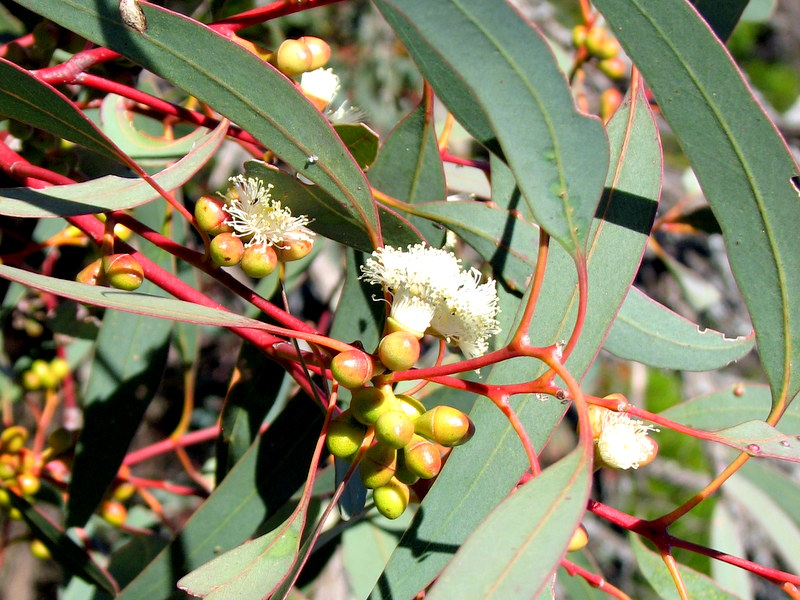What does a warmer future mean for plants? Can plants adapt, or will they be driven to extinction? Read on to get the answers to these and other questions…
Climate change presents a significant threat to biodiversity. Warmer temperatures, changes in rainfall and other interactions all place stress on plants and the natural communities they inhabit. In addition, climate change exacerbates existing environmental problems such as habitat loss and fragmentation, invasive species, pathogens, eutrophication, and altered fire regimes.
To manage and conserve biodiversity in the face of climate change, we must understand how species and ecosystems respond to these changing conditions.
In a significant step towards achieving an Australia-wide understanding of such responses, Dr Greg Guerin and colleagues examined the impacts of climate change on South Australia’s plant species and plant biodiversity, including its 418 endemic species

Plants point to adaptive trends
To understand the adaptive capacity of plants to cope with change, individual case study species were examined.
The narrow-leaf hopbush, Dodonaea viscosa subsp. angustissima, was one guinea pig species and was investigated to see if leaf width has changed over time. Leaf width is an important adaptational character linked to temperature, since narrow leaves are better in hot conditions as they dont absorb as much heat energy. Using field specimens (collected by the Terrestrial Ecosystem Research Network, TERN) and combined with a range of herbarium specimens, some dating back to the 1880s, showed that the leaves of the hopbush (decrease of 40%).
Because plants from warmer latitudes typically have narrower leaves, the narrowing of leaves in the hop bush can be directly linked to a warming climate.
It’s important to understand how plants cope with changing climates, because species that tolerate change are likely candidates for environmental restoration efforts. It also helps us predict the resilience of species and ecosystems.
Genetic analyses have detected evolutionary adaptation in genes controlling leaf shape and response to environmental stress, and suggest the hopbush is one species that could adapt quickly to changing conditions – a potential true climate survivor.

Complete change in plant communities predicted under severe scenarios
Despite the amazing adaptations of individual species, the research found that the composition and mix of species present in a plant community can be very sensitive to changes in climate.
While modest environmental changes can be absorbed by most ecological communities, under more severe scenarios, climate change is expected to drive a wave of local species extinctions. With the freeing up of niche space in these impacted communities, new species which are more arid-adapted are expected to replace those that have extirpated – a process known as species turnover.
Significant climate change and species turnover will lead to changes in growth rates and water stress. It’s also predicted to ultimately lead to lower species richness.
Enter ecological forecasting
The next step of this work is to use our empirical understanding of climate sensitivity to develop more sophisticated ecological models or climate forecasts.
We need forecasting that considers complex interactions with fire, habitat configuration and evolutionary adaptation to truly understand how our ecosystems and their valuable services are likely to change over time.
The achievement of such an environmental prediction system—such as that recommended in the government’s 2016 National Research Infrastructure Roadmap—will necessitate national research infrastructure groups working in the environmental domain, such as TERN, to collaborate and integrate observations, predictive modelling and uncertainty assessments for a broad range of research and industry applications.
Predicting impacts on environmental systems will underpin strategic decisions for the management of our continent and surrounding oceans including the development of early adaptions to climate change for domestic and global sustainable growth.
This blog is adapted and reprinted with permission from a TERN newsletter article, written by Mark Grant
This research was published in the journal Swainsona and can be accessed online here. Guerin GR, Christmas MJ, Sparrow B, Lowe AJ (2018) Projected climate change implications for the South Australian flora. Swainsona 30: 25–31.
Monitoring ecosystems vulnerable to change is a major focus of research using TERN’s Transect for Environmental Monitoring and Decision Making (TREND), a part of TERN’s Ecosystem Surveillance platform. For more information on this open-access research, infrastructure click here or contact Associate Professor Ben Sparrow.
Data from TERN’s Ecosystem Surveillance transects are now openly available via TERN’s Data Discovery Portal. Soil and plant samples are made available in the TERN Ecosystem Sample Library.


